(Other aspects are already explained well by other answers. This is just a note for the curious).
You might be interested that LCD displays like this already exist. (See this "Memory LCD" datasheet or this article for pictures.).

What would be the challenges in making such a monitor?
They are quite expensive, probably due to the extra memory inside the panel. Another limitation is they can only support 1 bit per pixel, making them black/white (or 8 colors).
Basically, each pixel internally stores 1 bit of information, allowing it to hold its state indefinitely just by being powered, not needing to be refreshed with data. To make the pixels not "burn out" by exposing them to DC (as explained by hobbs), a global "flip" signal clocks the whole panel at ~1Hz rate, reversing the pixels' polarity (this does not affect the content of the display).

You might wonder why we can't get a grayscale out of this, when all it takes is adding "just more memory". The problem is that each pixel would need its own DAC converter to create analog voltage proportional to the "darkness" of its data. The DAC component is way too complex (costly) to implement into each pixel. In my recent experiment with a "normal" TFT screen, the DAC consumed roughly the same amount of power as refreshing the rest of the panel.
Why can't the screen never refresh, but just take inputs from the operating system in the form of "update pixel 201,203 to this value"?
As already mentioned by others, the pixels inside the display array are not usually accessible at random, because the extra logic would be expensive and normally isn't needed. These "static" displays solve this addressing by allowing user to update 1-N rows at a time, but not individual pixels. This is still quite efficient for updating the display, it's a a tradeoff between complexity (cost) and reducing unnecessary updates (wasting power).

The aforementioned display (1.28'' small) is interfaced with a 1MHz SPI. One byte of command + row address + data is sent for each line. Larger displays of the same kind seem to be limited to a maximum FPS ~20Hz (due to the available 1MHz bandwidth). I haven't seen anything larger than 5'' manufactured with this technology, yet.
(Images were borrowed from the linked article and datasheets)



